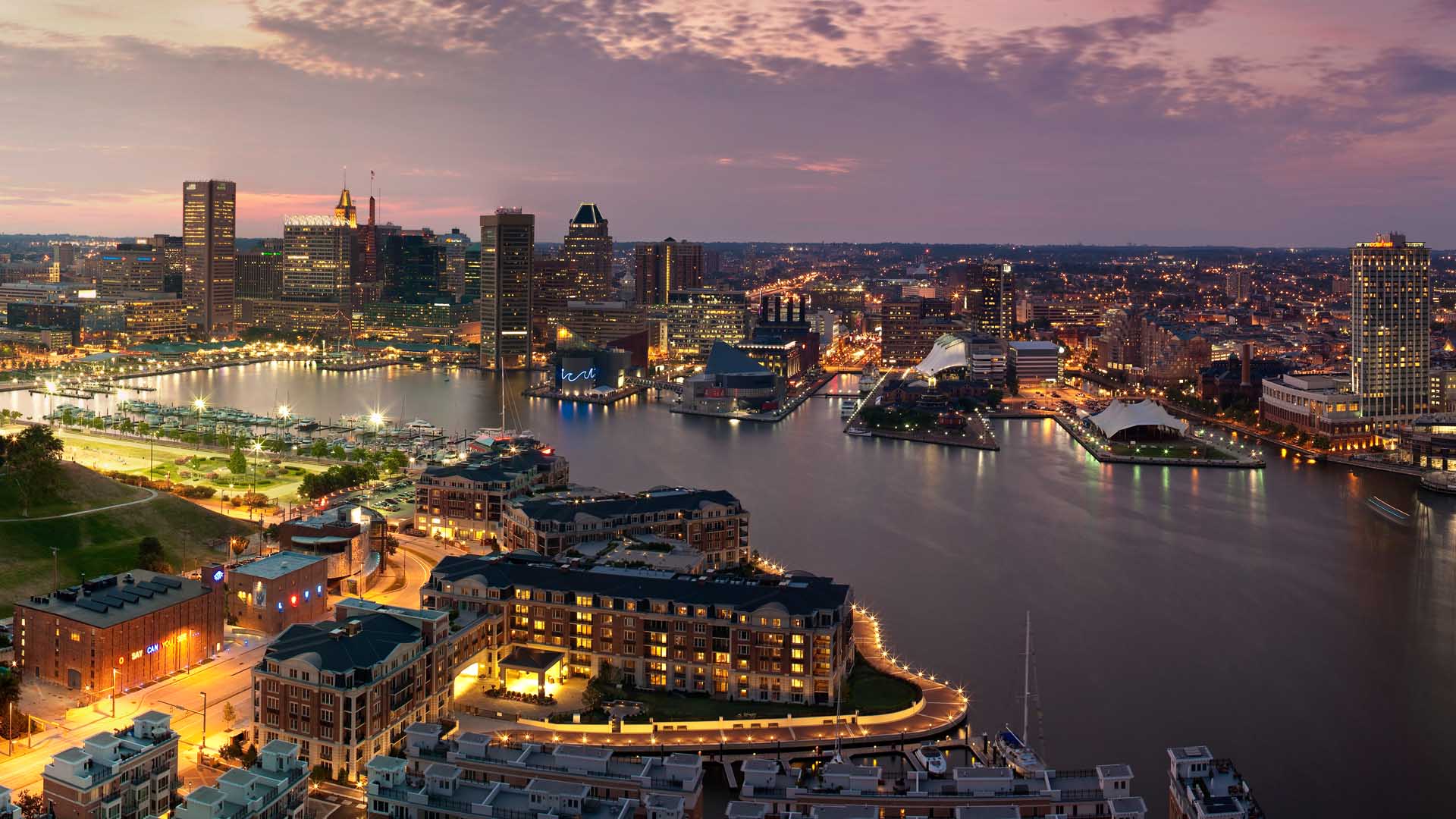Baltimore
The Inner Harbor:
Who would have imagined that one of the world’s largest estuaries–Maryland’s Chesapeake Bay–could extend all the way into the literal heart of a major city of over one million people–bringing with it oysters, blue crabs, and many of the plant and animal species that characterize this wonderful source of food, recreation, and perhaps most of all examples of estuarine natural beauty that are hard to rival anywhere. As an example of urbanature, the Bay is a remarkable instance of humans living, or trying to live, in harmony with a rich natural environment that intersects with the lives of these people both literally (there are over 100,00 streams and 11,000 miles of shoreline) and figuratively (the culture of the Bay is four centuries old and filled with unique linguistic, artistic, and environmental ways of living). The Chesapeake Bay extends north from its mouth at the end of the Delmarva Peninsula all the way to its most northern major tributary, Maryland’s Patapsico River. Along the way it provides numerous economic opportunities in addition to its recreational and environmental benefits.
A 2009 report by NOAA (The National Oceanic and Atmospheric Administration) reveals “that the commercial seafood industry in Maryland and Virginia contributed $3.39 billion in sales, $890 million in income, and almost 34,000 jobs to the local economy.” Of this impact, oysters represent the environmentally sad part of the story, since their current catch represents fewer than one percent of historic catches. Meanwhile, blue crabs tell a different tale in recent years, primarily because of carful management of the female population of the stock:
“According to the 2015 Chesapeake Bay Blue Crab Advisory Report, released by the Chesapeake Bay Stock Assessment Committee (CBSAC), the start of the 2015 crabbing season saw 101 million adult female blue crabs in the Bay. This marks a 47 percent increase from last year’s abundance of adult females, which the Chesapeake Bay Program tracks as an indicator of Bay health. Because blue crab abundance is above the 70 million threshold, the blue crab stock is not considered depleted. And because just 17 percent of adult females were harvested in 2014—well below the 25.5 percent target—overfishing is not occurring.” (CBP)


